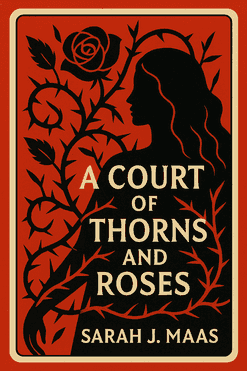What is
A Court of Thorns and Roses by Sarah J. Maas about?
A Court of Thorns and Roses follows Feyre, a human huntress dragged to Prythian’s faerie realm after killing a wolf that was actually a faerie. Forced to live in the Spring Court, she navigates political intrigue, a deadly curse, and a growing bond with Tamlin, the High Lord. The story explores love, sacrifice, and resilience as Feyre battles to save both the faerie world and her humanity.
Who should read
A Court of Thorns and Roses?
This novel appeals to fans of fantasy romance and fairy-tale retellings, particularly readers who enjoy strong worldbuilding and morally complex characters. While primarily targeting young adults, its themes of courage and loyalty resonate with broader audiences, including those seeking immersive escapism with elements of adventure and slow-burn romance.
Is
A Court of Thorns and Roses worth reading?
Yes, for readers seeking a lush fantasy-romance hybrid with high stakes and emotional depth. Its blend of Beauty and the Beast-inspired tropes, political intrigue, and character growth has made it a cultural phenomenon, though some critique its pacing and initial writing style as simplistic.
What are the main themes in
A Court of Thorns and Roses?
Key themes include love versus power (Feyre’s selfless love contrasts with Amarantha’s tyranny), identity (Feyre’s transition from survivalist to empowered leader), and resilience. The story also examines trust, betrayal, and the consequences of prejudice between humans and faeries.
How does
A Court of Thorns and Roses compare to
Beauty and the Beast?
Like the classic tale, the novel features a beastly love interest (Tamlin), a curse, and a focus on inner transformation. However, it expands the narrative with layered fantasy politics, darker stakes, and a protagonist who actively shapes her destiny rather than passively enduring her circumstances.
What is the significance of the riddle in
A Court of Thorns and Roses?
Amarantha’s riddle (“What’s the one thing that can turn a heart of stone?”) symbolizes the novel’s core message: love conquers hatred and tyranny. Feyre’s answer breaks the curse, highlighting how empathy and emotional intelligence triumph over brute force.
How does Feyre’s character develop in the story?
Feyre evolves from a survival-focused hunter to a strategic leader who embraces vulnerability. Her trials in Prythian force her to confront prejudice, harness inner strength, and prioritize love over fear, setting the stage for her growth in later series installments.
What criticisms exist about
A Court of Thorns and Roses?
Some readers find the first book’s pacing uneven, with a slower start focused on romance before escalating into action. Others note the initial writing style is repetitive, though this improves in subsequent novels.
How does
A Court of Thorns and Roses set up the rest of the series?
The introduction of Prythian’s courts (Spring, Night, etc.), secondary characters like Rhysand, and unresolved political tensions create a foundation for broader conflicts. The ending hints at Feyre’s enduring challenges and alliances, priming readers for expanded worldbuilding.
What role does Tamlin play in
A Court of Thorns and Roses?
Tamlin, High Lord of the Spring Court, begins as Feyre’s protector and love interest. His actions—initially driven by duty—gradually reveal a struggle between his responsibilities and his heart, complicating his relationship with Feyre and foreshadowing future conflicts.
Are there content warnings for
A Court of Thorns and Roses?
The book contains violence, gore, and themes of torture, confinement, and implied sexual coercion. Readers sensitive to power imbalances or graphic depictions of trauma may find scenes with Amarantha particularly intense.
Why has
A Court of Thorns and Roses become so popular?
Its blend of fantasy, romance, and feminist undertones resonates with readers seeking escapism with emotional depth. Social media buzz, relatable character arcs, and Maas’ immersive storytelling have solidified its status as a genre standout.




















